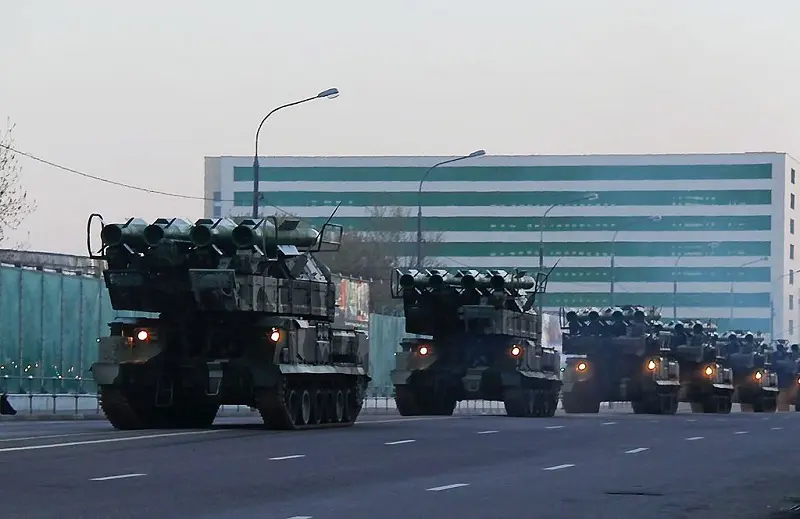By XHABIR DERALLA
The myth about the Russian military power is probably one of the oldest and most carefully created in the catalogue of the Russian propaganda. The use of this key disinformation is for both international and domestic goals, for deceiving potential enemies and for self-deceiving, that is, strengthening the moral of the army and of the domestic population.
The Russian military weakness exposed on the battlefield in Ukraine
There are many analyses and claims of the Russian propaganda falsely portraying Russia’s military power as being gigantic. However, analyses, intelligence information and reports from the battlefield over the past decades show the opposite. The Invasion of Afghanistan (1979-1989) gave proof to the numerous weaknesses of the Soviet military technology.
The post-Soviet era is not much different. It seems that the propaganda is the only real powerful weapon manufactured in Russia. The military intervention in Georgia in 2008, the two wars in Chechnya (1994-1996 and 1999-2009) and other military adventures of the Russian Federation show a truly depressive picture of the Russian military machinery.
The most obvious evidence of the real power(lessness) of the Russian army was provided already in the first week of the aggression against Ukraine. Untrained, insufficiently equipped and poorly armed, the Ukrainian soldiers and civilian volunteers turned the self-proclaimed “unstoppable” Russian armament into wreckage. What’s happening?
Non-existing tanks and caseation of production and repairs
The spectacularly announced new Russian “Armata” tank was described as a technological revolution. The “Arnata” program was supposed to be completely different from the previous tanks in the Soviet style. It was shown for the first time in May 2015 at the so-called “Moscow Victory Day Parade”. Since then, apart from in parades, this tank has not been seen in action, and most certainly not on the battlefield in Ukraine.
If for nothing else, the shiny “toy”, T-14, is too expensive to be used on the battlefield, where the Ukrainians are fiercely fighting to reject the aggressors, and turning the endless lines of tanks into ashes. Apparently, one T-14 tank costs 3.7 million dollars, which is 20 times more than the price of the US made anti-tank missile “Javelin”, which costs 175.000 dollars.

The Russian T-14 tank from the “Armata” program, noted at a parade in Moscow, 2015 (Wikimedia Commons)
Furthermore, a few reports claim that due to a shortage of imported components, the industrial giant Uralvagonzavod has stopped production and repairs of all tanks from its production line. The company announced that workers have been fired “until further notice”. In Russian media, the caseation was explained as “a reset of production and sending factory workers on vacation”. Still, it is more likely that the closing of the factory is a result of the sanctions from Japan, Great Britain and the EU, which are the main source for components for production of tanks in Uralvagonzavod.
The production of missile systems has also stopped
The Russian production of ground to air missiles (САМ) has also stopped, due to the sanctions. According to the claims of the Defence Intelligence of the Ministry of Defence of Ukraine on April 17, the machine factory in Ulyanovsk, manufacturer of CAM, radars and equipment for air defense had stopped production and repairs.

Medium-range missile systems 9K37 Buk, at preparations for the parade in 2010 (Wikimedia Commons)
The facility is located in the Ulyanovsk region, which was founded in the Soviet Union in the 1960s. It is used for the production of a large number of different models of missile systems, such as the 9K37 Buk, marked by NATO as SA-11 Gadffy and 2K22 Tunguska, marked by NATO as SA-19 Grison.
However, with the factories closed, workers are given one of two choices: to go on unpaid leave or to join the Russian army in its invasion of Ukraine, if possible, as operators of the missile systems and get a monthly pay of 50,000 rubles (around 600 dollars).
The majority of the electronic components of the Russian Army are purchased from Germany, but that has stopped due to the sanctions.
(continues)
Additional information and sources: CEPA, Ukraine’s Office for Euro-Atlantic Integration, The Jerusalem Post, Ukrainian Intelligence Directorate, Fortune, RT, Rostec.ru, Ukraine Armed Forces, 19fortyfive, SofRep.com, The Moscow Times, The National Interest, Nr.12, 1988 , Ulyanovsk Mechanical Plant, Uralvagonzavod, Britannica, Wikipedia, DTIC, NPR, CSIS, T&F Online, US Army War College, etc.
Original text published on Civil Today, on April 19, 2022.
The opinions, findings and conclusions or recommendations expressed here are of the Author. This text may be downloaded under the Creative Commons 4.0 license.
Translation: N. Cvetkovska





